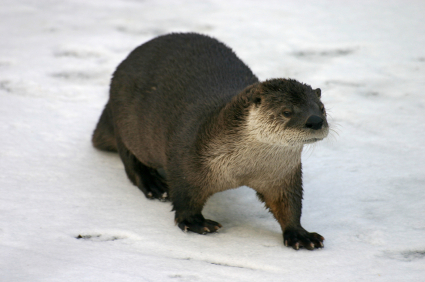Identifying Otters
Though there are many species of otters in the wild, the one most likely to be found in residential areas is the river otter. These mammals are from the weasel family and have long, sleek bodies with dense, glossy brown fur from head to toe. Otters vary in size, ranging from 38 to 44 inches in length and weighing from 10 to 30 pounds. They have short legs, webbed toes, and tapered, muscular tails that aid in swimming. In fact, they can stay underwater for up to eight minutes because of their closeable nostrils and ears.

Where to Find Otters
These playful pests are mostly seen in ponds, lakes, rivers, and other aquatic areas. They den in yards and homes near water sources, typically living under porches and decks. Occasionally, an otter will retreat into a beaver dam, which may lead homeowners to mistake the two. Although both animals swim, it is easy to tell them apart. Beavers have wide, flat, hairless tails and are rounder in shape than otters, which typically look sleek and athletic.
Damage & Dangers
Although they may look adorable, otters can be dangerous around humans, pets, and children. Like most wild animals, they are known to attack if threatened. The pests are also susceptible to tick, flea, and lice infestations that can be transmitted to people. Additionally, otters that live near homes leave behind droppings and the remains of prey, causing a terrible odor. When these clever pests den in yards, it is best to let the professionals at Critter Control identify and manage the problem.